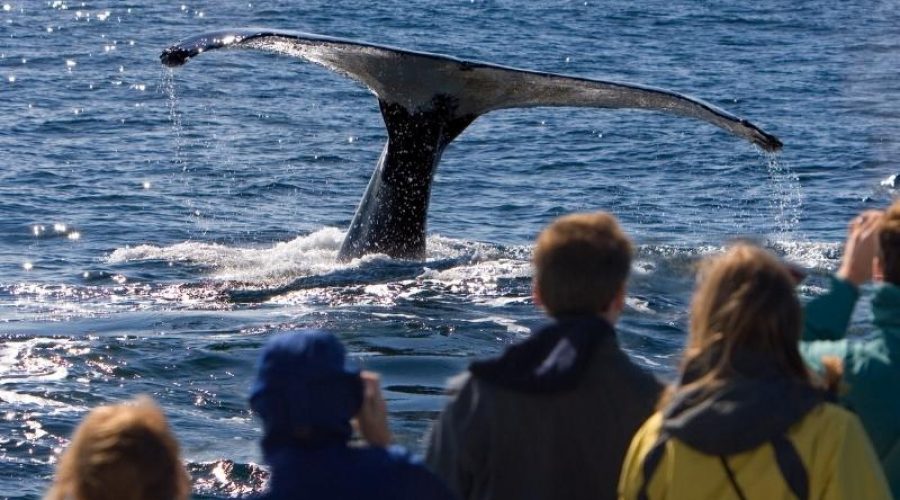Guide to Canada Whale Watching
There is no more humbling than the whale of all the creatures to observe in Canada. From the massive humpback whale to the gregarious “little” beluga, Canada has a diverse range of species and locations that is second to none.
Below we have summarized the best Canadian whale watching locations as well as the species and times of year to visit. Information about the overall population numbers in the territory is listed as well.
Types of whales in Canada
Whales are divided into two groups, toothed and baleen whales.
- Toothed whales have teeth for catching fish, and other marine animals, some examples of toothed whales would be the orca, often called the killer whale and the sperm whale.
- Baleen whales have a mouth without teeth. Instead, they have a stiff hair-like growth called baleen used like a filter to trap fish and krill in the whale’s mouth. Baleen whales are usually larger than toothed whales; examples would be the humpback and blue whales.
Canada whale watching is as diverse as the nation itself. From large party boat excursions to see feeding humpbacks, to expeditions across the sea ice to observe narwhals, the eco-tourist is certain to return home with a full camera roll and a new appreciation for the world’s largest mammals.

British Columbia
British Columbia may be the only Pacific territory listed for whale watching, but that doesn’t mean whale watching in British Columbia is anything short of exemplary.
Whale watching in Vancouver and Victoria feature unique opportunities to see orcas, humpback whales, and gray whales, a species only found in the pacific.
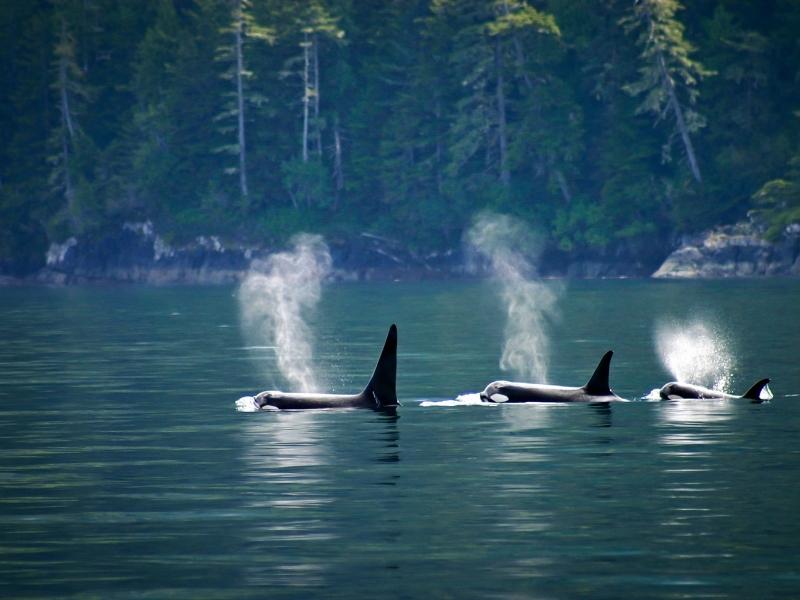
Whale watching in Vancouver boasts a high success rate of around 90%, with many guides working in unison to find pods of whales near the San Juan Islands. The best viewing times for this area are from June to September.
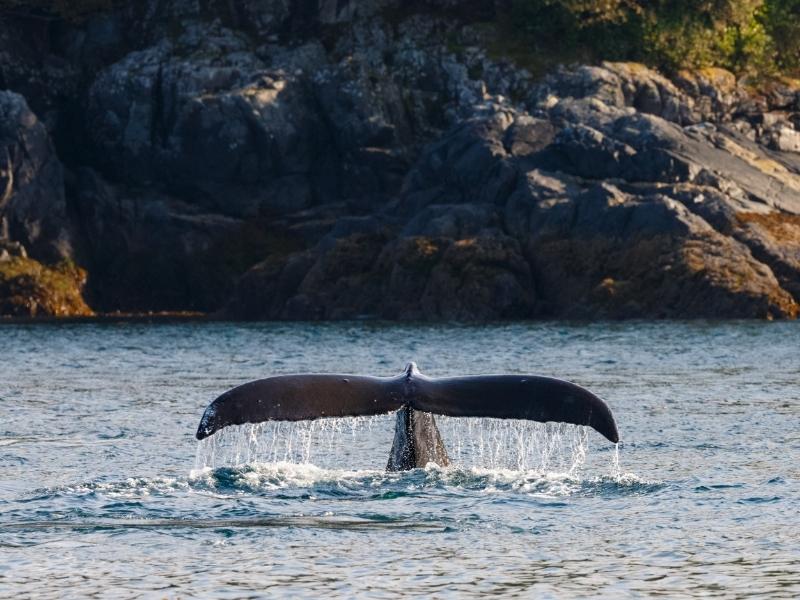
The population of gray whales in the northern pacific is around 27000 individuals. If searching for gray whales, Tofino couples a high chance of seeing these gray giants with the backdrop of dense rainforests famous for bear viewing. Your best chances of seeing whales are from March to October. Conveniently these are also ideal months to view the bears fattening up for their winter.
WHERE TO STAY – The most sustainable eco-lodges right in the heart of BC is Nimmo Bay Wilderness Resort. Search for more alternatives in Canada.
Nova Scotia
Nova Scotia’s Bay of Fundy may be well known for its extreme tides, but it is also known for its abundance of whales too. Nova Scotia whale watching is among some of the best in Canada. About 35,000 humpbacks swim the waters of the North Atlantic, research suggests that this number is increasing by about 10% each year.
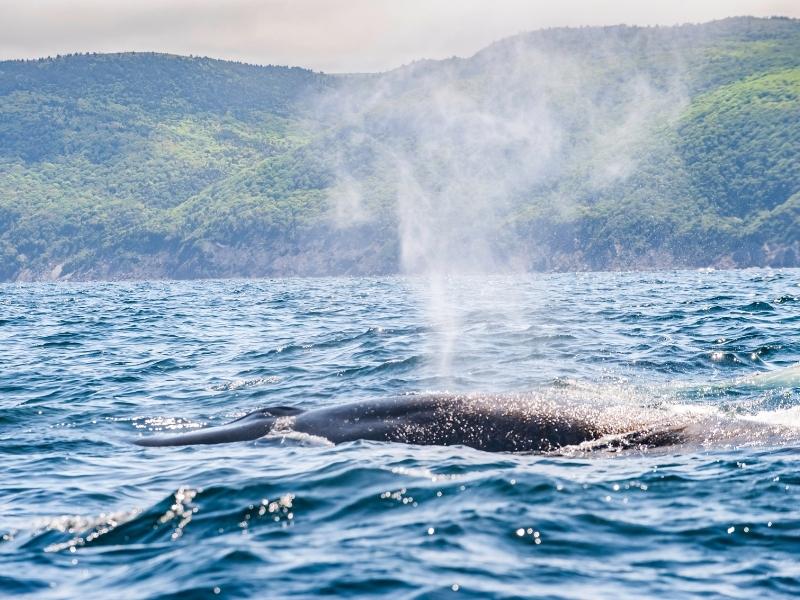
Not only can feeding whales be seen from the coastline in the summer months, but a quick zodiac ride or party boat trip from nearly anywhere on the island can put you in front of playful humpbacks and feeding minke whales.
Humpback whales provide excellent photographs as they are naturally curious and will engage in a behavior known as “spy-hopping,” where they raise their heads straight out of the water, bobbing or hoping to get a better look at the boat. Feeding whales also attract other marine animals like leatherback turtles and bluefin tuna, making your whale watching into an ecosystem watch.
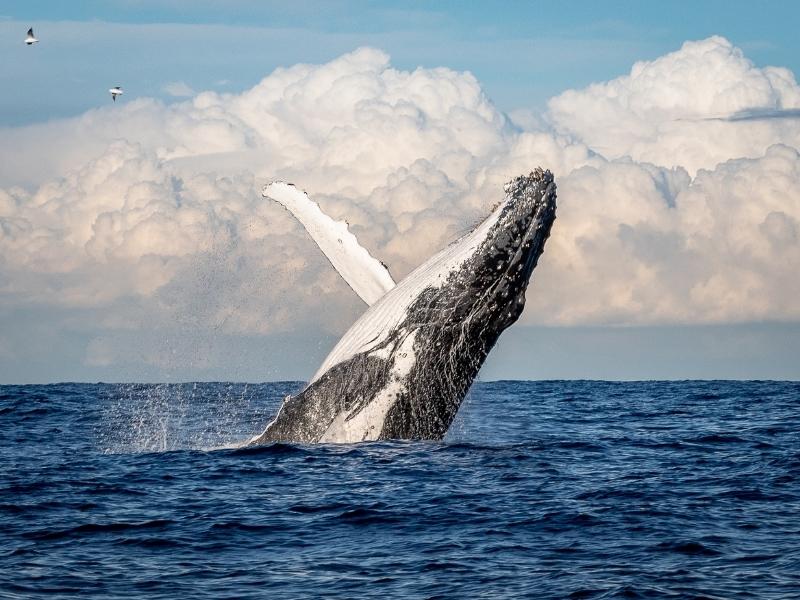
While whales can be seen through the summer: from May to October, it has been recommended that June be avoided because of the heavy fog that usually rolls in during the month. Reduced visibility from fog means reduced viewing options and potentially canceled trips for safety reasons.
WHERE TO STAY – The most sustainable eco-lodges right in Nova Scotia is Trout Point Lodge (check availability). Search for more alternatives in Canada.
Newfoundland and Labrador
May through September are the best times to experience whale watching in Newfoundland. Newfoundland sees an explosion of fish in its waters in these months, and the whales follow.
Multiple species of porpoise and whales visit the coast during the summer months. Whales such as minke, blue, and orca are seen, but the humpback whale is most common. Humpbacks are known for their breeching displays where they leap from the water. A 40-ton animal leaping from the water is an awe-inspiring sight.
Because of the deep water close to shore, the prospective whale watcher can do their watching from a small boat, kayak, or even shore. Ferryland lighthouse and St. Vincents beach are within driving distance of St. Johns and boast excellent dry land whale watching.
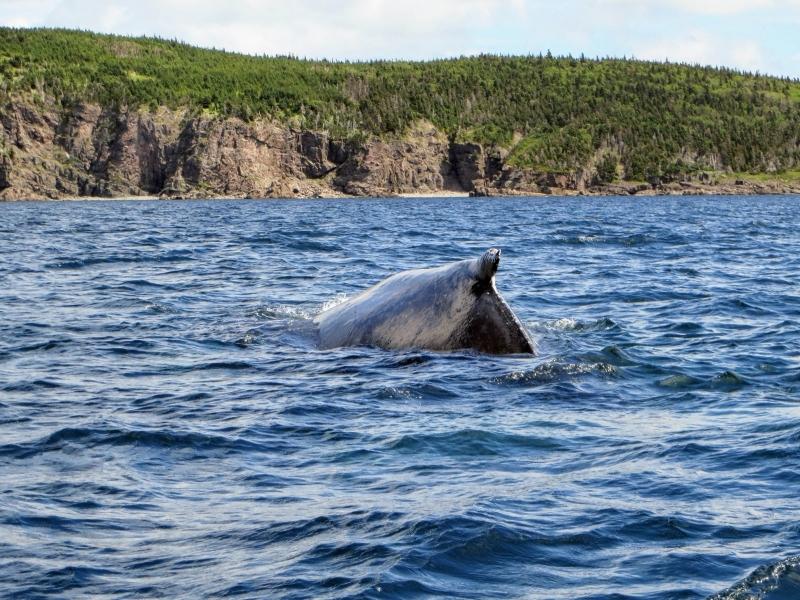
It is interesting to note that minke whales, being one of the fastest species of baleen whales were able to escape commercial hunting more than 100 years ago. Because of their speed and smaller size, the population of minke whales is about 180,000, one of the largest populations of whales anywhere.
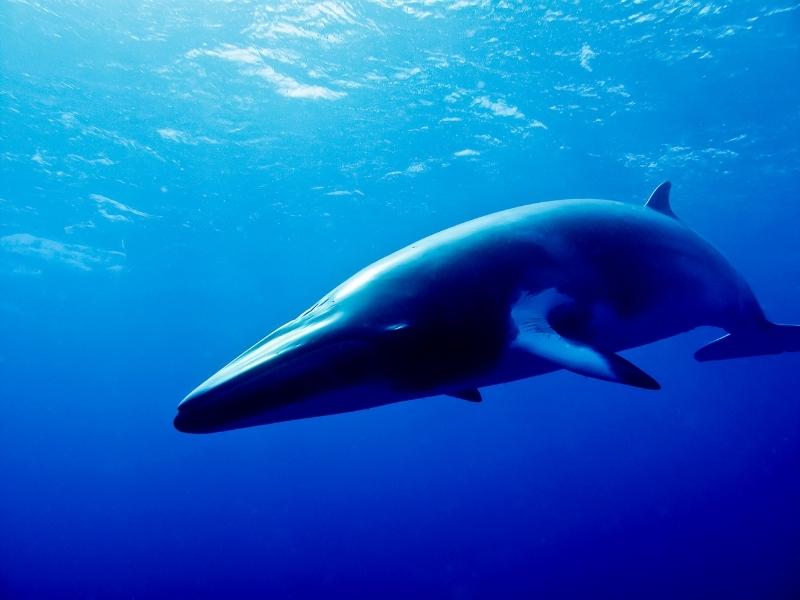
Quebec
At the mouth of St. Lawrence, Quebec offers a unique blend of whale species and many months to view them. From May until October, a total of 13 species of whales and dolphins will visit the St. Lawrence estuary.
Pods of toothed whales like the dolphin-sized pilot whale will be seen in the gulf of St. Lawrence along with the resident pod of beluga whales.

While rarer to see, the sperm whale has been sighted routinely in Quebec waters since the early ’90s. The basis for “Moby Dick” the sperm whale is the largest toothed whale capable of diving thousands of feet below the surface in search of food.
Quebec whale watchers can also look for baleen whales, such as the critically endangered North Atlantic right whale. Hunted almost to extinction in the 19th century, only about 300 right whales remain in this region.
Another whale to be seen in the St. Lawrence’s sound is the minke whale that looks diminutive compared to the blue whale, which can also be seen during the summer months.

Manitoba, Hudson Bay and Churchill
The Hudson Bay area is most well known for its beluga whales. Belugas are small, toothed whales known for their vocalizations. Their clicks and squeaks to the rest of the pod can even be heard above the water, making a kayak trip even more exciting.
Belugas are hard to misidentify because they are naturally all white; this makes them easy to spot in open water but much harder in the colder months when they are hunting on the edge of the sea ice.
While belugas reside in Manitoba all year long, they stay in family groups of 12-20 whales and roam along the shore or ice. In the summer months, as many as 60,000 belugas congregate in Hudson bay to feed, breed, and give birth to their young. These protected inlets that the belugas summer in make watching them accessible to anyone who wants to travel to Manitoba. Belugas can be viewed from the beach, by zodiac, kayak, and in some cases, even on a paddleboard!
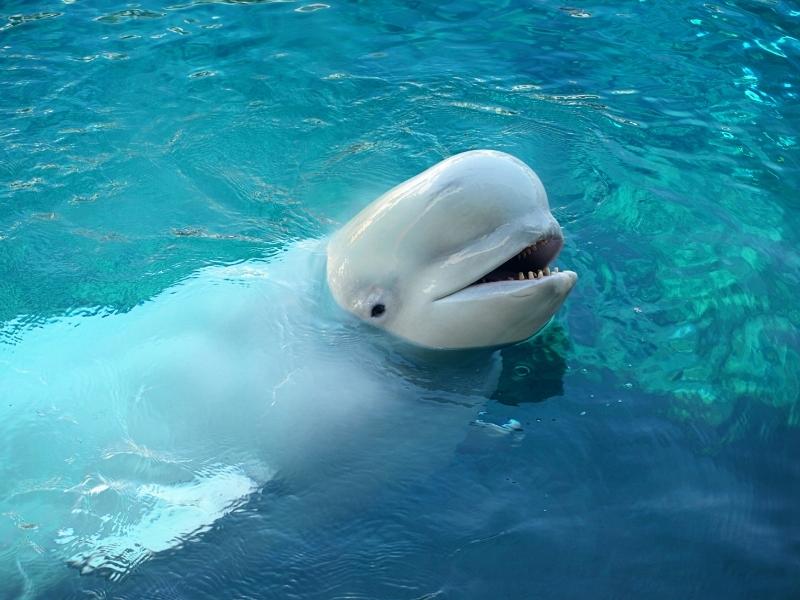
Nunavut boasts a dazzling display of artic animals to be observed, but the most iconic of them is the narwhal. Known affectionately as the “unicorn of the sea,” the narwhal is an artic whale that grows an elongated tooth that protrudes like a horn from the front of its upper jaw. While narwhals will stay in the same waters year-round, the summer months are best for viewing them as they move closer to shore. About 80,000 narwhals exist in the wild.
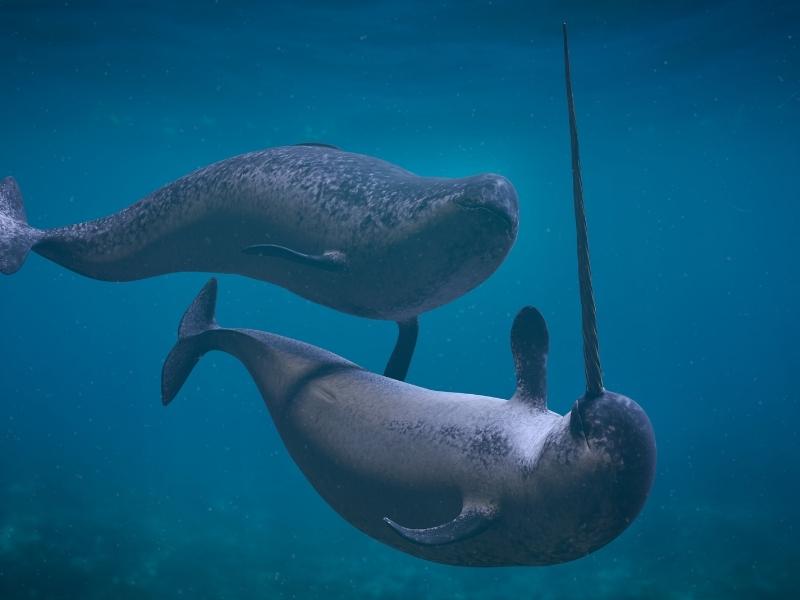
Another species of whale that resides year-round in Nunavut is the bowhead whale. These slow-moving leviathans reach up to 60 feet in length and possess the largest mouth of any animal. Just like the narwhal, bowheads are best viewed in the summer months when they rest and feed, especially in the waters of Isabella Bay, the first marine sanctuary designated to protect these whales.
What to expect on a whale watching tour in Canada?
Whale watching in Canada is as varied as the coastline, from kayaking with whales to viewing them from the shore. These different viewing styles, from large party boats to smaller watercraft, depending on the season and your level of commitment. With all nature-based adventure, it’s essential to understand what you want out of your whale watching and find the right service for you.
How long are whale watching trips?
Most whale watching trips are a few hours in length, and depending on your mode of transportation can take some muscle power to get you there. It’s important to remember to dress in layers when heading out for a whale watch as the temperature on the water is usually cooler than on land, and don’t forget the sunscreen even on cloudy days.
Will I see a whale?
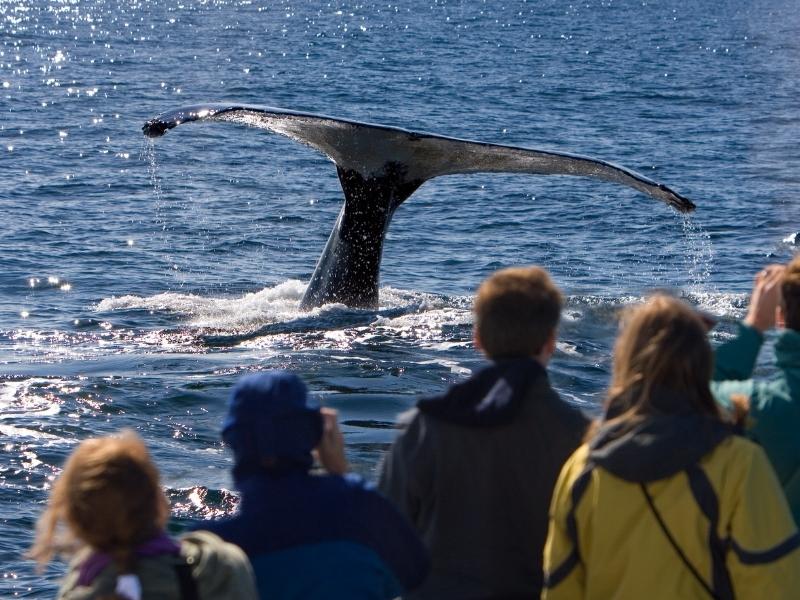
This can be a loaded question as whales are free to swim where they please based on tide, weather, and food. However, whales will usually return to the same locations year after year to feed, mate, or give birth.
The chances are high that you will see at least one whale on a whale-watching trip.
The consensus is about 80% of the time; whale watchers will see a whale. Since whales are social animals, the chances are good that you will encounter family groups called “pods” with multiple generations living together.
Is whale watching sustainable?
In short, yes. Whale watching is a phenomenal way to experience the majesty of nature’s largest creatures while also helping protect them. Whale watching brings attention to these gentle giants and involves tourists from around the world in their protection of them.
However, any interaction with whales should be done within the laws and regulations set by the local authorities. For the safety of both the whales and the whale watchers, distance guides and activities permitted are well regulated. Drones, for example, must be flown at least 1,000 feet above and 3,000 feet away from whales as not to disturb them.
We strongly recommend using a licensed guide to navigate Canadian waters, both to keep you safe and also to keep the animals safe. While some of the current protections have made whale watching less interactive, such as Canada’s banning of snorkeling with whales, whale watching guides support protections for the creatures they love. Whale watching guides also serve as additional sets of eyes; they help wildlife agencies monitor the health and behavior of the whales while keeping an eye out for bad apples that need to be reported to law enforcement.
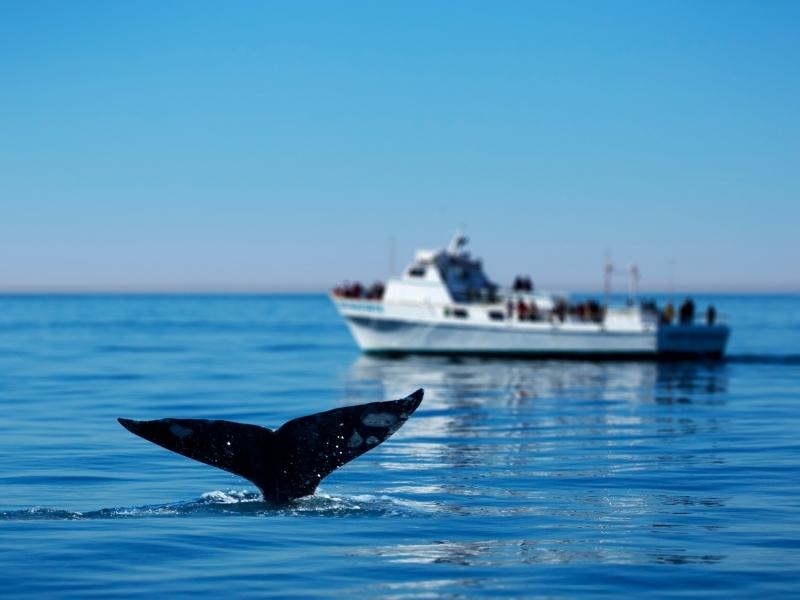
Emese Maczko is a travel blogger behind Eco Lodges Anywhere. Having explored several destinations around Europe, the US, Indonesia, and Australia, and resided in Germany, the United Kingdom, and Luxembourg, Emese possesses a keen understanding of diverse cultures and an appreciation for the beauty of each destination she visits. She advocates for sustainable travel and ecotourism.

